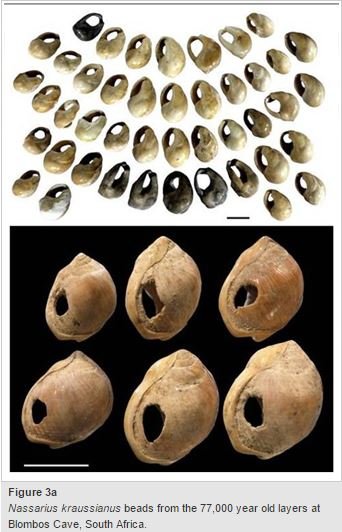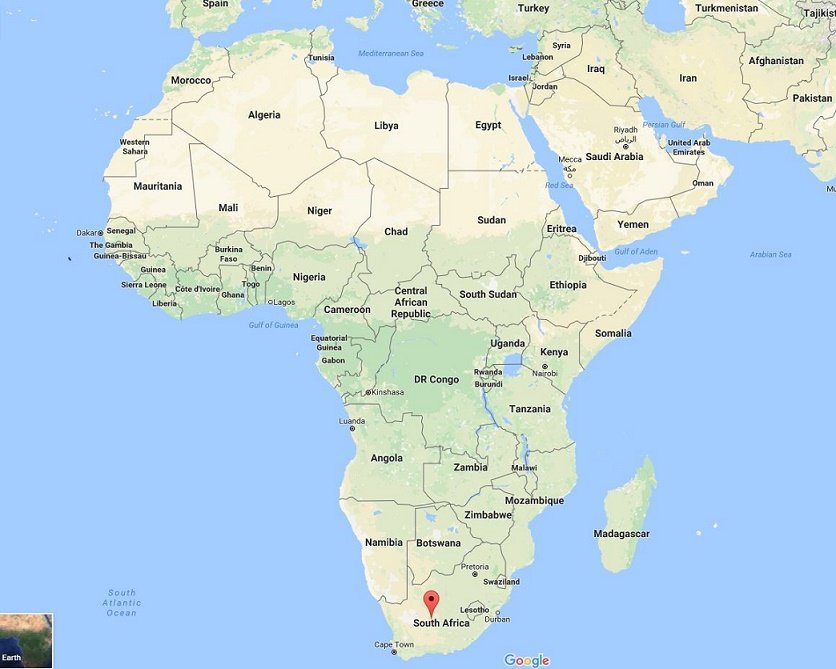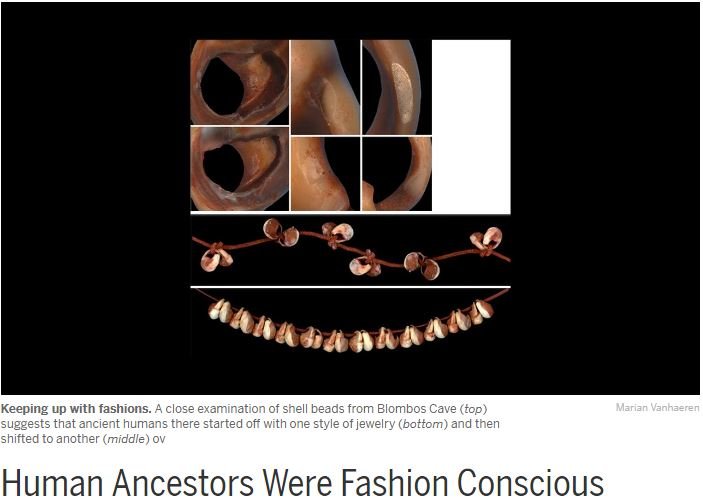Personal ornaments, often in the form of beads worn as necklaces or bracelets, are considered by archaeologists as a key sign of sophisticated symbolic behavior, communicating either membership in a group or individual identity.
The Women From Ziz Valley, Morocco, Africa

–Vintage Photography
In 2004 archaeologist excavated the Blombos Cave at the southern tip of Africa came to an unexpected insight: Clusters of mollusk shells that site workers had discovered over the past decade were found to have been pierced by tools held by human hands, then strung on some sort of cord. In other words, they were not mere shells but necklaces-adornment.
Definitivly dated to 75,000 years ago, the fourty-one tiny, orange-and-black beads are the oldest jewelry ever found, symbols of a prehistoric vanity that foreshadows the sort of baubles and bangles worn by women of every station in Helen of troy’s time, no less than in our own.
–“Looks” by Gordon L. Patzer, PH.D.
sciencemag.org/news/2013/03/human-ancestors-were-fashion-conscious
Perforated marine shells similar to those from Blombos have also been found in caves from North Africa and the Middle East. Shell beads are of the earliest evidence for personal ornaments, dating to between 100,000 – 70,000 years ago (d’Errico et al. 2009)

nature.com/scitable/knowledge/library/the-transition-to-modern-behavior
Blombos Cave is an archaeological site located in Blombosfontein Nature Reserve, about 300 km east of Cape Town on the Southern Cape coastline, South Africa. The cave contains Middle Stone Age deposits currently dated at between c. 100,000 and 70,000 years before present (BP), and a Late Stone Age sequence dated at between 2000 and 300 years BP. The cave site was first excavated in 1991 and field work has been conducted there on a regular basis since 1997 – and is ongoing.

The most informative archaeological material from Blombos Cave includes: engraved ochre, engraved bone ochre processing kits, marine shell beads, refined bone and stone tools and a broad range of terrestrial and marine faunal remains, including shellfish, birds, tortoise and ostrich egg shell and mammals of various sizes. These findings, together with subsequent re-analysis and excavation of other Middle Stone Age sites in southern Africa, have resulted in a paradigm shift with regards to the understanding of the timing and location of the development of modern human behavior.


No Comments Yet